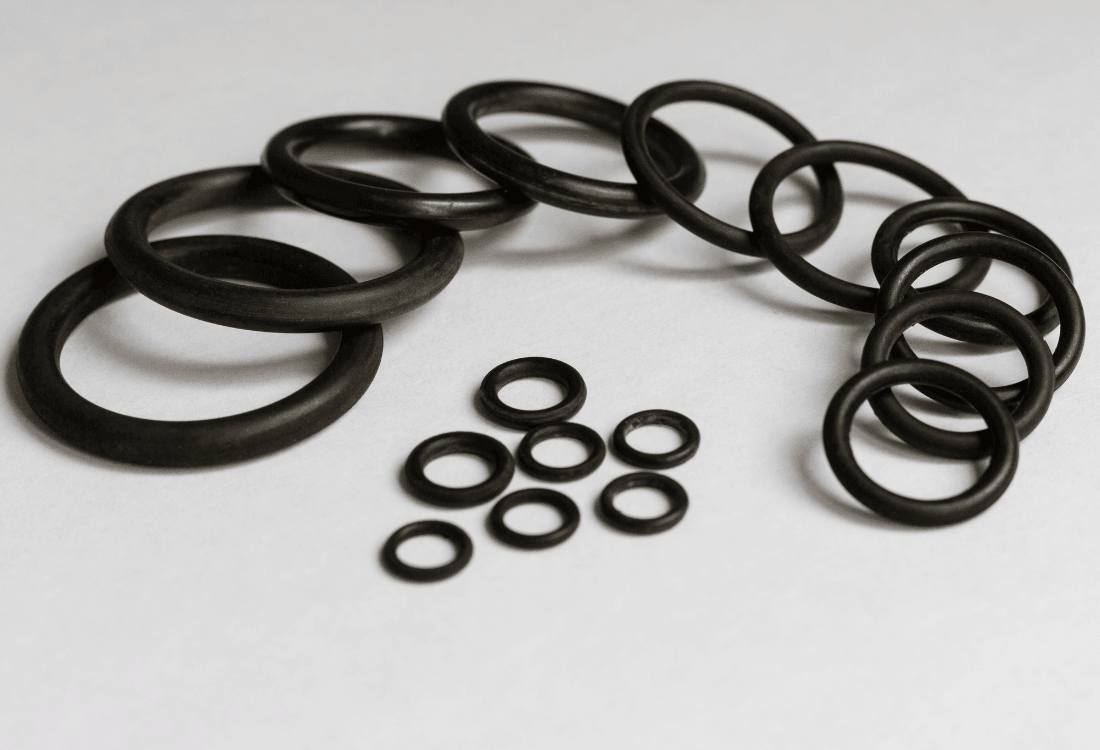Hydraulic seals create a barrier to contain hydraulic fluids, and are therefore a foundational element of efficiency and performance in fluid power systems. Over the past century, innovations in hydraulic seal design and the sealing materials themselves have driven steady improvements in reliability, sustainability, and performance, and the process continues to this day. In this article, we will look at the latest advancements in seals brought about by modern fluid power applications and engineering standards.
Early Hydraulic Sealing Methods
Although hydraulic systems have been in existence since the Industrial Revolution (the hydraulic press was invented in 1795), it wasn’t until the early 20th Century that hydraulic applications as we know them became possible, following the invention of rubber and metal-based hydraulic seal designs. These offered improved resilience over earlier leather-based designs, but still often fell short under high pressures and extreme operating conditions.
Modern Polymer Seals
Hydraulic engineering development in the 20th century marked a shift towards more synthetic polymers used as hydraulic seals, including nitrile (NBR), fluorocarbon (FKM) polyurethane (PU), perfluoroelastomers (FFKM) and polytetrafluoroethylene (PTFE) – popularly known by its tradename Teflon. These advanced polymers remain the backbone of modern sealing materials due to their resistance to chemicals, temperature fluctuations, friction, and physical wear and tear.
- PTFE seals are indispensable components in high-speed hydraulic power applications due to their excellent electrical insulation characteristics, low friction properties, and high temperature resistance. They are also strongly hydrophobic, repelling water and other liquids, making PTFE seals resistant to moisture and corrosion.
- FKM seals are capable of withstanding aggressive synthetic hydraulic oils and extreme temperature conditions.
- FFKM seals combine the chemical resistance of FKM with the flexibility of elastomers, helping them endure temperatures in excess of 300°C, and making them popular components in aerospace and industrial applications.
Emerging Developments In Sealing Technology
Several exciting developments are currently emerging in the field of hydraulic seals, transforming the way that the seals are used and the potential applications in industry and manufacturing.
- Multi-lip seals: Multi-lip seals include multiple sealing edges, providing greater leakage control and extending the operational life of components. Some components have a spring-loaded design that gives greater seal integrity for applications with fluctuating pressure or misalignments. Specialist design variants are also available, including metal case profiles and buffer seals to manage extreme pressures or abrasive environments (e.g. for heavy construction plant and quarrying applications).
- Smart seals: So-called smart seals are equipped with embedded sensors that allow fluid power systems to be better monitored and maintained. These smart components can remotely track operational variables such as temperature, fluid condition, and pressure, helping operators plan maintenance schedules and predict failures before they occur. These seals also have the potential to increase safety in aerospace applications and safety-critical systems such as turbines and power-generating plants.
- Sustainable materials: Modern hydraulic seals depend on petrochemical polymers for their material base, which raises an environmental question about the impact caused by extraction and production. In response, some vendors are experimenting with more sustainable or biodegradable materials, including biodegradable thermoplastic elastomers (TPEs), which have the flexibility of rubber and the recyclability of some plastics, polyhydroxyalkanoates (PHA), which is a type of biodegradable polyester produced by microorganisms, and even vegetable oil-derived polyurethanes created from castor or soybeans. The sustainability profile of hydraulic seals has also been improved by increasing the durability of PTFE and other petrochemical seals under a range of conditions, so that they require less frequent replacement.
Next Steps
At Hydrastar, we offer the latest innovations in hydraulic seals and fluid power components from some of the world’s leading developers of hydraulic technology. To find out more, please contact one of our knowledgeable team members today by clicking here.


